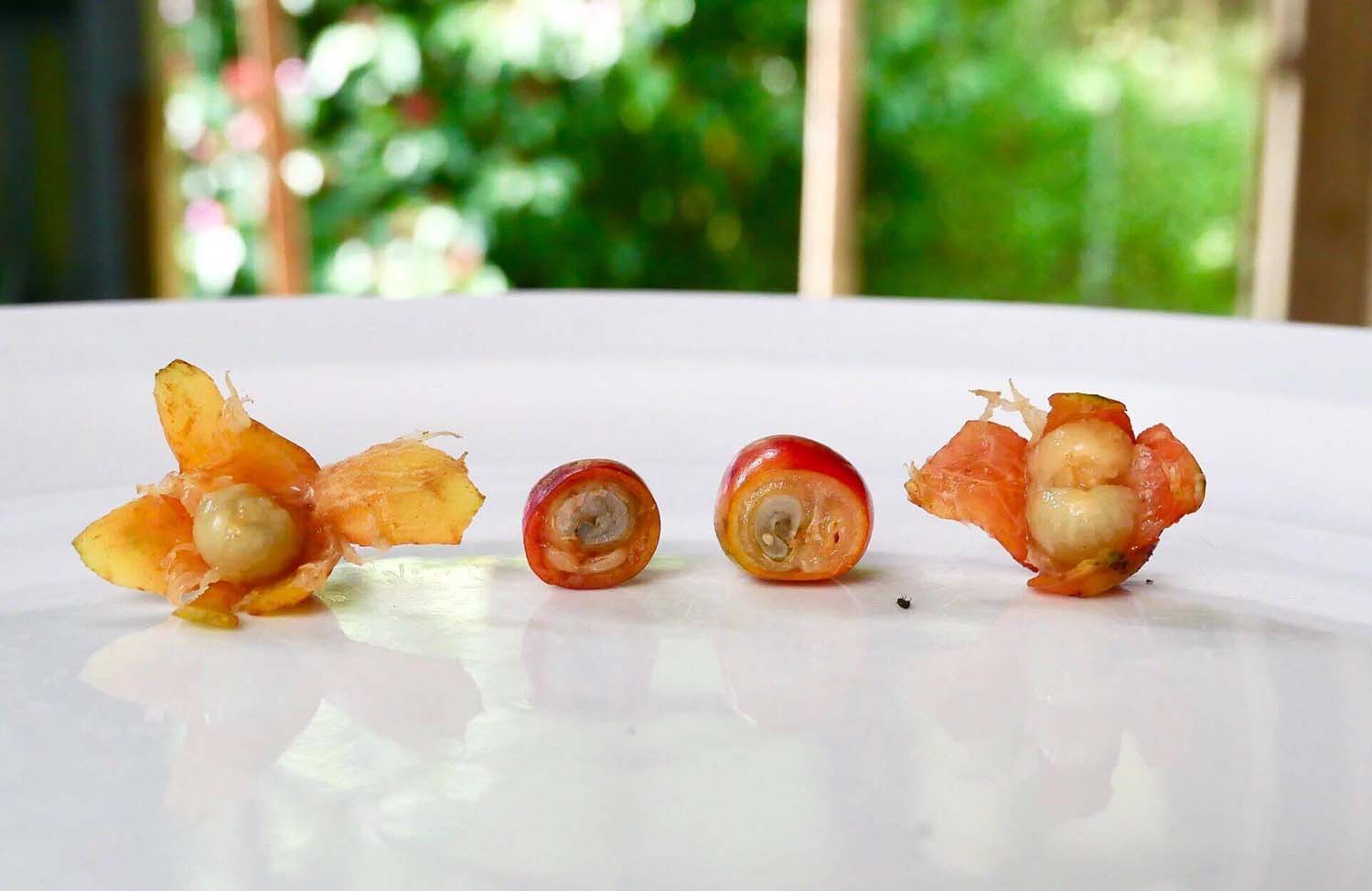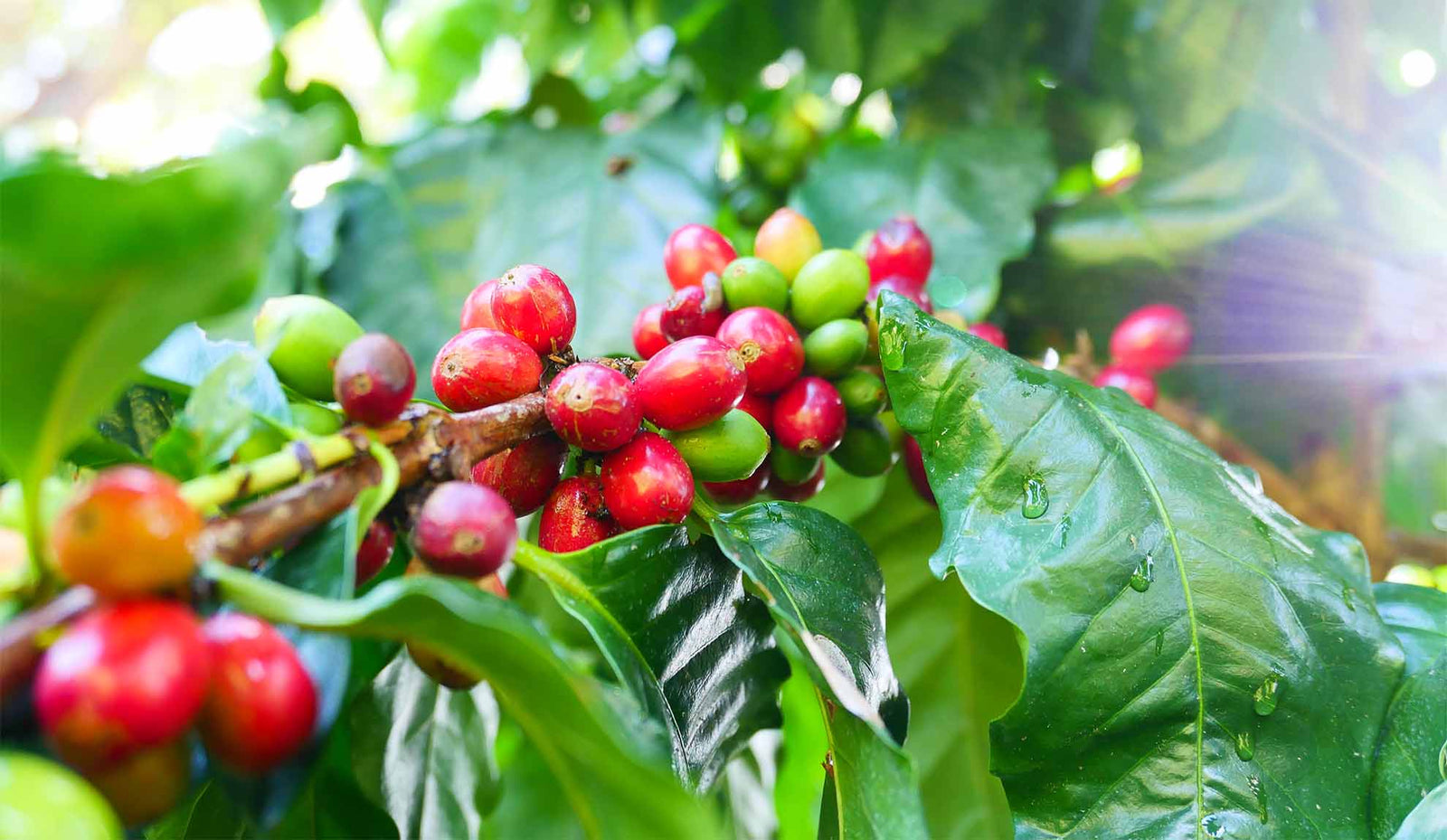"On the cupping table, this explosively aromatic coffee dwarfs the rest."
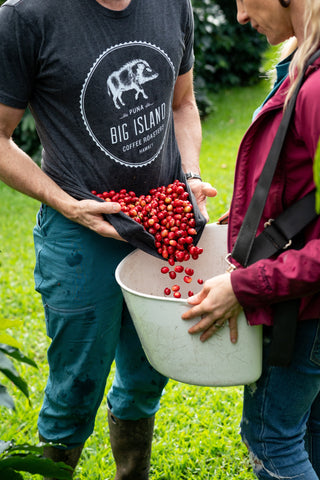
No one tells you the amount of time, energy, sweat, and tears that go into crafting the perfect award-winning coffee (I'll let you in on the secret right away - for us, it was three years). Let us pull back the curtain to give you a peek behind the scenes.
Rewind the clock to 2021 when we first began working with Miles Mayne, a second-generation coffee farmer and owner of Silver Cloud Farm in Ka'ū. When touring Miles' farm, the first thing we noticed was the impressive variety of coffee trees he was growing. One variety caught our eye in particular, which boasted huge, oval coffee cherries (fruits) in dense clusters. While it was grouped with the other Red Catuai trees, we were suspicious. If you're as lost in the sauce of the coffee world as we are, then you already know that our suspicions peaked because Red Cauai produces smaller, round-shaped fruit. One of our absolute favorite varieties, on the other hand, has large juicy cherries that look like they're having the most enviable kitchen parties in tight sections along each branch of the tree. After much deliberation, we were able to determine the trees were not Red Catuai but one of our top-tier favorites: Maragogipe. Thus began our labor of love to bring you the highly rated, complex, fruity, and floral Ka'ū Cloud Maragogipe.
Ka'u Coffee Growing Conditions
The Ka'ū district neighbors the Kona district on the Big Island of Hawai'i and contains several coffee growing sub-regions, most notably Pear Tree, Cloud Rest, Nāʻālehu, and Wood Walley. Wood Valley, in particular, offers a perfect reservoir for environmental factors and soil compounds that nurture the happiest coffee trees (in our humble opinions). “What's really unique about Wood Valley is its shape because it's nestled into this little bowl on the side of Mauna Loa,” Brandon explains. The shape of the valley, being surrounded on three sides, traps afternoon clouds and rain. “When Kilauea Crater is active and kicking out a lot of vog, the wind carries it west to Ka'u where it settles in Wood Valley. One of the key gasses in vog is sulfur, a vital compound in the development of both flavor and aroma in coffee”. We've discovered that coffees grown in this region stand out for their distinct cup characteristics and intensity, especially when compared to other Hawaiian coffees on the cupping table. We were so lucky to find a farmer like Miles in Wood Valley, who is so open to collaborating and allowing us to have hands-on participation with his coffee processing.

The Process of Creating Ka'u Cloud Maragogipe Coffee
Everything was falling into alignment for this soon-to-be near and dear coffee and thus began our three-year research and development process. We wanted to get everything right. We wanted to honor the land, the crop, and all the labor, thought, and care that goes into making the cup of coffee you may be nursing in your mug as you read these very words. Things take time when you start experimenting with farming and other organic processes: fresh crop to grow, fermentation to occur, the drying and resting process, and then roasting. Even when we got something we were happy with we had to take the time to make sure we could reproduce it again and again.
Choosing The Right Yeast for Our Maragogipe Ka'u Coffee
Our first year was dedicated to deciding which yeast was going to highlight the larger-than-life character we knew this coffee was capable of. Using specific yeast strains during the fermentation process is more predictable and controlled. It leads to more consistent cup attributes and intensified positive cup qualities. Throughout the harvest season, we tried a variety of wine yeasts to help break down and remove the mucilage during fermentation. We experimented with a few different strains popular in the coffee world: Cima, Oro, Intenso and Vin13 being the most notable. When we experimented with K1, a yeast most commonly used in the wine Industry, we found it turned up the volume on all of Maragogipe's unique features. It's an exceptional representation of the critical role microbiology plays in developing high-quality coffee.
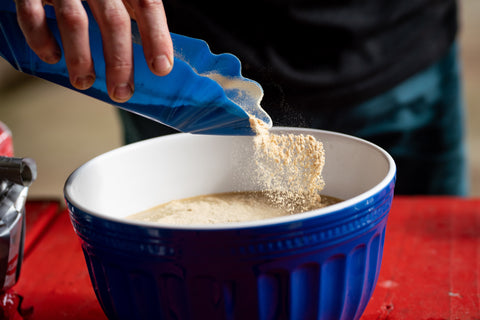
Coffee Fermentation
As we entered into our second year of developing Ka'ū Cloud Maragogipe, we were confident in our yeast choice but were still working out the details of some other key factors. We ran through multiple trials and discovered we were able to achieve the most complexity and intensity when we added a yeast nutrient to the fermentation process. Very similarly to adding sugar to yeast when baking bread, we used a nutrient to create fuel for the K1 yeast to thrive and come alive. Almost at a loss for words, Brandon remembers the first time he cupped the version of Maragogipe after adding the yeast nutrient, “I remember how it felt in my mouth. It was like a person was in my mouth taking one big open stretch coming all the way up the palate”. On the cupping table, this explosively aromatic coffee dwarfs the rest. Being able to achieve the loud, juicy flavor profile we were after felt like a major accomplishment.
Thus we entered our third and final year in developing one of our highest-rated coffees! Enter Juli Burden, agriculture student at UH Mānoa, coffee agricultural research manager with the Hawai'i Agriculture Research Center(HARC), and barista of 15+ years. With Juli's expertise and scientific approach, we experimented with lengthening our fermentation process, which led to a sweeter and more developed flavor profile.
We hope you get a chance to share our experience with this coffee. We recommend giving yourself ample time and space to savor the expansive characteristics -- this big coffee may consume all of your attention. It truly took a village to raise this coffee, and we couldn't be more proud!
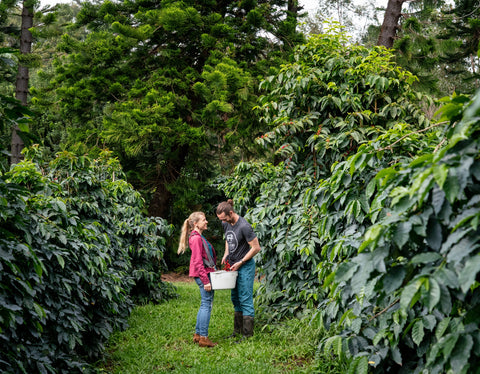
Ka'u Coffee Tasting Notes:
After three years of experimentation, discovery, and refinement we were able to develop a coffee with flavors so sweet and complex it nearly sparkles with mineral effervescence and notes of dried apricot, lychee, amber, hop flowers, tangerine in aroma and cup. We entered Ka'ū Maragogipe for judging with Coffee Review this past year and it was awarded 95 points. Their blind assessment is as follows:
“Rich-toned, complex, fruit-driven. Dried apricot, lychee, amber, hop flowers, tangerine in aroma and cup. Crisp, apple-like acidity; plush, viscous mouth feel. Finish focused around notes of dried apricot and amber with compelling floral undertones.
A resonant, richly sweet, stone fruit-driven Maragogipe grown in Ka'ū and processed experimentally with the addition of wine yeasts to the fermentation — juicy, multi-layered, uniquely composed.”
Thanks to the Coffee Farmers and Collaborators
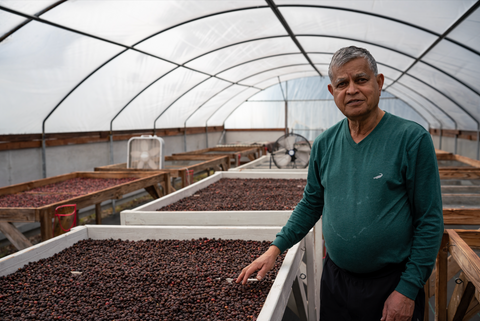
We are honored that the farmers we work with are as dedicated to the land, the crop, and the coffee as we are. Working with rare coffee varieties can be a frustrating and financially risky endeavor, and we are eternally grateful to Miles, Julie, and everyone who helped us along the way. Coffee varieties like Maragogipe are rare because they're more challenging to cultivate, and have lower yields than more robust varieties like Caturra or Catuai, which all boils down to less money back in the farmer's pocket. Our goal with this collaboration is not just to enhance aromas, highlight sweetness, and increase both the intensity and depth of flavors of this Maragogipe variety coffee; but to support our farmers and safeguard our wild and beautiful lands.



